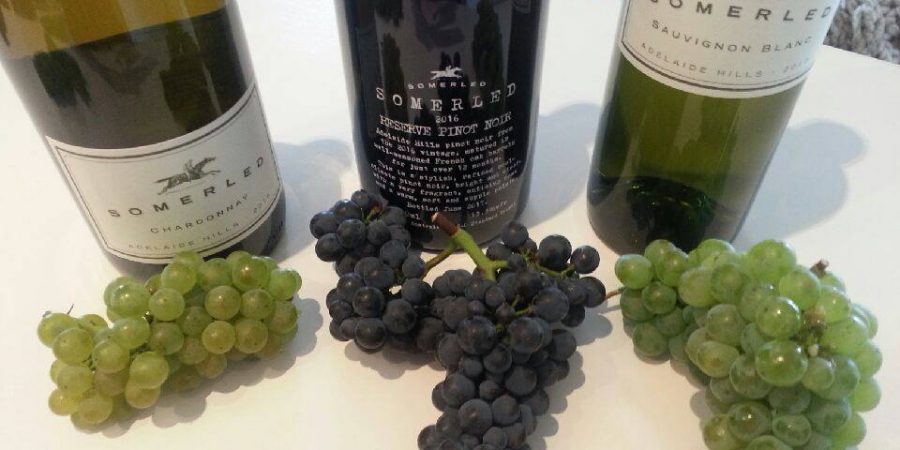This week, let’s continue our chat about the beautiful Adelaide Hills wine region…
VITICULTURE AND WINEMAKING
Vineyard management
As we discussed last week the diverse terrain creates a variety of mesoclimates and microclimates. This creates both challenges and opportunities for growers.
The slopes can make it difficult to use machinery, so vineyards are often hand-pruned and hand-picked.
The region’s diverse soil types present challenges too. They can grow vines that are either too vigorous or not vigorous enough. In the northern areas of the region, well-drained soils decrease vigour. In some other areas, growers use summer pruning techniques to help control vigour.
The region’s vines are typically grown with tall, well-exposed canopies to maximise sunlight penetration. This ensures the grapes ripen properly and flavours are well-developed. Canopy management is especially vital for Sauvignon Blanc which can tend toward excess production of foliage.
With relatively high rainfall and humidity, pests and fungal disease can present problems.
Irrigation
While Adelaide Hills receives ample rainfall throughout the year, most vineyards use irrigation. Also, a large proportion of the region is fortunate enough to have decent underground water supplies.
Harvest
Harvest is typically early February to early April. Of course, that varies according to grape variety and location. Chardonnay and Pinot Noir destined for sparkling wine are typically first to be harvested, followed by Sauvignon Blanc.
Ripening and harvest often happen latest in the cold, high-altitude subregion of Piccadilly Valley.
FUN FACT: Some producers pick Sauvignon Blanc grapes at various intervals to blend different characteristics into a single wine, achieving the desired levels of green fruit and herbaceous characters alongside ripe citrus, stone fruit and tropical fruit flavours.
Environmentally sustainable practices
The Adelaide Hills is an environmentally sensitive region, being in the catchment for the Adelaide metropolitan water supply and home to important native species.
The Adelaide Hills Wine Region (AHWR) Environment Committee leads the way in supporting producers to adopt sustainable practices. A growing number of vineyards are being farmed organically and chemical-free.
Winemaking
With its excellent grape growing conditions, Adelaide Hills offers endless opportunities for winemakers who want to showcase the terroir of the region. They use a mix of both traditional and innovative new techniques.
Terroir: the environmental conditions, especially soil and climate, in which grapes are grown and that givea wine its unique flavour and aroma
The region produces top-quality fruit known for its vibrant aromas, varietal flavours and balanced acidity levels. Winemakers are focussed on getting the best out of these top-notch grapes to produce elegant cool climate wines.
Loving our blog? Sign up for weekly updates straight to your inbox…
NOTEWORTHY STYLES AND VARIETIES
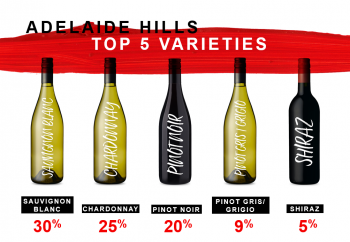 The diverse climate and soils of the Adelaide hills create a complex network of microsites that are capable of producing everything from the most delicate sparkling and aromatic Sauvignon Blanc to vibrant Chardonnay and spicy Shiraz.
The diverse climate and soils of the Adelaide hills create a complex network of microsites that are capable of producing everything from the most delicate sparkling and aromatic Sauvignon Blanc to vibrant Chardonnay and spicy Shiraz.
There is no single star performer here, but the common factor across styles are the premium elegant nature of these wines and the clear vibrant character that is pronounced throughout the different sites.
Adelaide Hills’ signature wines are…
Sparkling wine:
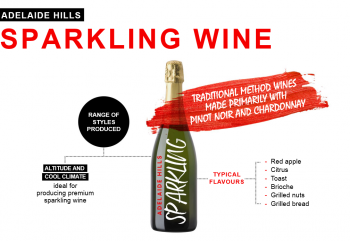
Our altitude creates ideal conditions for sparkling wine grapes Chardonnay and Pinot Noir to retain their acid levels and develop their fruit flavours. This makes Adelaide Hills one of Australia’s most exciting Sparkling wine regions. Classic styles have red apple and citrus flavours and a lovely complex yeasty character that comes from ageing in the bottle.
Sauvignon Blanc:
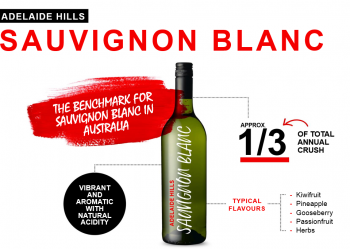
This variety loves a cool climate. Here it produces vibrant and aromatic wines bursting with natural acidity. The Adelaide Hills has established itself as a benchmark for Sauvignon Blanc in Australia.
Adelaide Hills Sauvignon Blanc at its best is vibrant, aromatic and fresh, with complexity and texture. It is typically light-bodied with notes of kiwifruit, lemon citrus, pineapple, kiwifruit and passionfruit. It often has a soft succulent middle palate and a crisp refreshing finish. It’s an early drinking wine that doesn’t usually benefit from age.
Chardonnay:
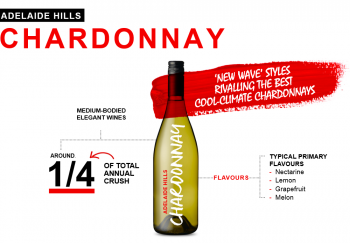
Adelaide Hills is a leader in “new wave” Australian Chardonnay. We produce wines that rival the finest cool-climate Chardonnays in the world with their fruit intensity and complexity.
Adelaide Hills Chardonnay is vibrant and fresh, with bright acidity and flavours of citrus and stone fruit. It is typically elegant and lean but has the acid structure to age and evolve.
Pinot Noir:
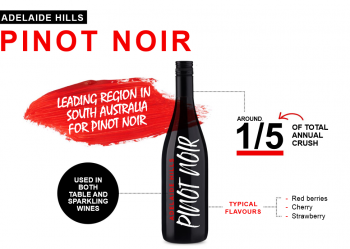
With its elevation and col climate, Adelaide Hills is the leading region in South Australia for the production of Pinot Noir – used in both table wines and Sparkling styles. Adelaide Hills Pinot tends to be medium-bodied with richer ripe cherry and berry flavours.
And of course, Rob makes some absolutely stunning versions of each of these varieties. Why not open one or two of them this Easter long weekend?!
Thanks again go to Wine Australia for the top-notch info in this week’s post.
Do you have a favourite wine region you’d like to learn more about?
Let me know in the comments and I’ll see what I can find!
